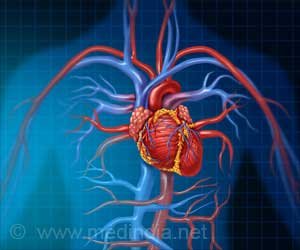Is Stronger Treatment Necessary for Women With Hardened Arteries?

“The study suggests that a given burden of atherosclerosis is riskier in postmenopausal women than it is in men of that age,” said study author Dr. Sophie van Rosendael of Leiden University Medical Centre, the Netherlands. “Since atherosclerotic plaque burden is emerging as a target to decide the intensity of therapy to prevent heart attacks, the findings may impact treatment” (
).
in what is called plaque. While young women do have heart attacks, in general, women develop atherosclerosis later in life than men and have heart attacks at an older age than men (
), in part because of the protective effect of estrogen. This study examined whether the prognostic importance of atherosclerotic plaques are the same for women and men at different ages as this could be important for selecting treatments to prevent heart attacks.
The study included 24,950 patients referred for coronary computed tomography angiography (CCTA) and enrolled in the CONFIRM registry, which was conducted in six countries in North America, Europe, and Asia. CCTA is used to obtain 3D images of the arteries in the heart.
Advertisement
Total atherosclerotic burden was rated using the Leiden CCTA score, which incorporates the following items for each coronary segment: plaque presence (yes/no), composition (calcified, noncalcified or mixed), location, and severity of narrowing, for a final value of 0 to 42. Patients were divided into three categories previously found to predict the risk myocardial infarction: low atherosclerotic burden (0 to 5), medium (6 to 20) and high (over 20). In addition, obstructive coronary artery disease was defined as 50% narrowing or more.
The primary outcome was the difference in Leiden CCTA score between women and men of similar age. The investigators also analysed sex differences in the rates of major adverse cardiovascular events (MACE), which included all-cause death and myocardial infarction, after adjusting for age and cardiovascular risk factors (hypertension, high cholesterol, diabetes, current smoking and family history of coronary artery disease).
Atherosclerosis in Women
A total of 11,678 women (average age 58.5 years) and 13,272 men (average age 55.6 years) were followed for 3.7 years. Regarding the primary outcome, the study showed an approximately 12 year delay in the onset of coronary atherosclerosis in women: the median Leiden CCTA risk score was above zero at age 64 to 68 years in women versus 52 to 56 years in men (p<0.001). In addition, the overall plaque burden as quantified by the Leiden CCTA score was significantly lower in women, who had more non-obstructive disease.
Dr. van Rosendael said: “The results confirm the previously reported delay in the start of atherosclerosis in women. We also found that women are more likely to have non-obstructive disease. It was formerly thought that only obstructive atherosclerosis caused myocardial infarction but we now know that non-obstructive disease is also risky.”
The burden of atherosclerosis was equally predictive of MACE in premenopausal women (aged under 55 years) and men of the same age group. However, in postmenopausal women (age 55 years and older), the risk of MACE was higher than men for a given score. In postmenopausal women, compared to those with a low burden, those with a medium and high burden had 2.21-fold and 6.11-fold higher risks of MACE. While in men aged 55 years and older, compared to those with a low burden, those with a medium and high burden had 1.57-fold and 2.25-fold greater risks of MACE.
Dr. van Rosendael said: “In this study, the elevated risk for women versus men was especially observed in postmenopausal women with the highest Leiden CCTA score. This could be partly because the inner diameter of coronary arteries is smaller in women, meaning that the same amount of plaque could have a larger impact on blood flow.”
References :
- Computerised tomography angiography in the heart of cardioavascular imaging – (https://esc365.escardio.org/EACVI-Congress/sessions/7262-computerised-tomography-angiography-in-the-heart-of-cardioavascular-imaging)
- Sex and age-specific interactions of coronary atherosclerotic plaque onset and prognosis from coronary computed tomography – (https://academic.oup.com/ehjcimaging/advance-article/doi/10.1093/ehjci/jead094/7151544?login=false)
- Global Use of Strategies To Open Occluded Coronary Arteries IV-Acute Coronary Syndrome – (https://www.acc.org/latest-in-cardiology/clinical-trials/2010/02/23/19/06/gusto-ivacs-one-year-followup)
Source: Eurekalert
Source link
#Stronger #Treatment #Women #Hardened #Arteries



